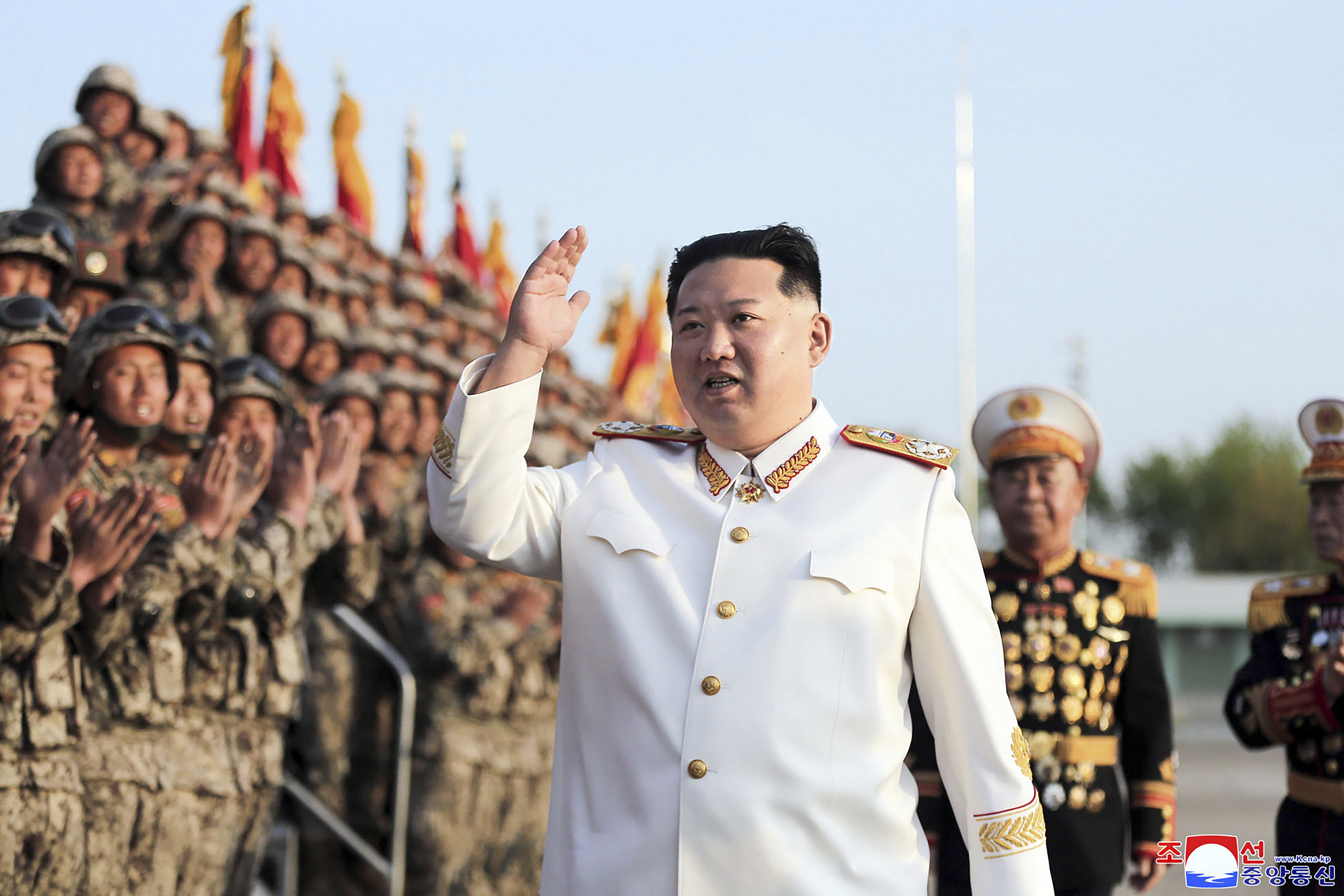
North Korea launched cruise missiles toward the sea on Wednesday, South Korea’s military said, three days after the North carried out what it called a simulated nuclear attack on South Korea to protest its military drills with the United States.
North Korea has stepped up its weapons testing activities, saying they are in response to the ongoing South Korean-U.S. military training that it sees as an invasion rehearsal. Analysts say North Korean leader Kim Jong Un likely intends to enlarge his arsenal to win greater outside concessions, while trying to boost an image of a strong leader amid domestic economic hardships.
WATCH ANYTIME FOR FREE
Stream NBC10 Boston news for free, 24/7, wherever you are. |
Relevant Content:
The 11-day South Korean-U.S. drills are to end on Thursday. But North Korea is expected to continue its weapons tests as the United States reportedly plans to send an aircraft carrier in the coming days for another round of joint drills with South Korea.
Get updates on what's happening in Boston to your inbox. Sign up for our News Headlines newsletter.
South Korea’s Joint Chiefs of Staff said it detected “several” cruise missile launches from the North’s eastern coastal town of Hamhung. It said the missiles flew into the waters off the North’s east coast and that South Korean and U.S. intelligence authorities were analyzing further details.
The launches are the North’s sixth round of missile tests this month and the fourth since the U.S. and South Korean militaries early last week began large-scale military drills, which include field exercises and computer simulations. The field training is the largest of its kind since 2018.
The Joint Chiefs of Staff said the South Korean military will maintain a firm readiness and successfully complete the rest of the drills with the United States.
North Korea keeps a huge stockpile of ballistic missile systems whose tests are banned by multiple U.N. Security Council resolutions. Eleven rounds of U.N. sanctions imposed on North Korea since 2006 were approved because of North Korea’s previous ballistic missile and nuclear test explosions.
Cruise missile tests by North Korea aren’t prohibited by the U.N. council. But experts say they still pose a serious threat to its neighbors because they are designed to fly at a lower altitude to avoid radar detection. Experts say the main mission of North Korean cruise missiles includes striking U.S. aircraft carriers or other big enemy ships in the event of conflict.
North Korea has called some of its cruise and ballistic missiles “strategic” weapons, a suggestion that it wants to arm them with nuclear warheads. Foreign experts debate whether the North has overcome the remaining technological hurdles to possess functioning nuclear missiles.
North Korea’s state media didn’t immediately confirm Wednesday's launches. But it carried a statement by senior Foreign Ministry official Jo Chol Su, which protested what it called recent U.S. diplomatic attempts at the U.N. Security Council to push with the North’s denuclearization.
Cho said North Korea will view any outside bid to force it to surrender its nuclear weapons as “a declaration of war.” He said North Korea will sternly deal with such an attempt in line with its escalatory nuclear doctrine.
After more than 70 missile tests last year — the largest number for a year — North Korea has extended its provocative run in weapons demonstrations in 2023, launching around 20 missiles in 10 separate events. The weapons that were tested this year included short-range nuclear-capable ballistic missiles capable of striking South Korea and intercontinental ballistic missiles designed to attack the mainland U.S.
On March 12, the day before the South Korea-U.S. drills began, North Korea test-fired two cruise missiles from a submarine. Last month, North Korea launched what it called four long-range cruise missiles that demonstrated potential to strike targets 2,000 kilometers (1,240 miles) away.
On Sunday, Kim supervised a test-firing of a short-range ballistic missile launched from what was possibly a silo dug into the ground. State media called it a simulated nuclear attack on unspecified South Korean targets that was meant to send a “stronger warning” to the United States and South Korea over their drills.
The North’s media said a mock nuclear warhead placed on the missile detonated 800 meters (2,600 feet) above water, an altitude that some experts say was aimed at maximizing damage.
It was the first time for North Korea to publicize such an altitude for detonating a nuclear weapon though it has previously claimed to have conducted simulated nuclear strikes on its rivals.
By disclosing such information, North Korea likely wanted to intimidate South Korea and the United States. After a test last week of the country’s longest-range Hwasong-17 ICBM, Kim told state media that the launch was meant to “strike fear into the enemies.”
The North’s testing spree indicates Kim is emboldened by his advancing nuclear arsenal. Last year, North Korea legislated a law that authorizes the preemptive use of nuclear weapons.
South Korea and the United States have been responding by expanding their joint military exercises.
Seoul’s Defense Ministry said earlier Wednesday that South Korea and the U.S. are planning to conduct a live-fire exercise that would be “unprecedented” in scale in June.
As part of the ongoing joint drills, South Korean and U.S. troops on Wednesday staged live-fire training at a site near the land border with North Korea. Col. Brandon Anderson, deputy commanding officer of the 2nd Infantry Division, stressed that the drills were defensive in nature.
“We are (going to) continue to do it,” he said. “It is what we expect to do in conflict and to be good at it.”
___
Associated Press video journalist Yong Jun Chang in Pocheon, South Korea, contributed to this report.



